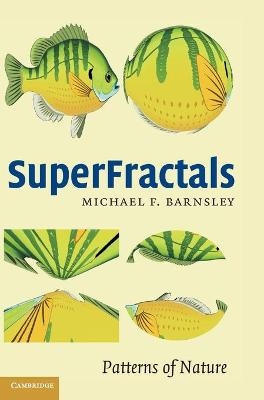
SuperFractals
Seiten
2006
Cambridge University Press (Verlag)
978-0-521-84493-2 (ISBN)
Cambridge University Press (Verlag)
978-0-521-84493-2 (ISBN)
In SuperFractals, first published in 2006, Michael Barnsley describes mathematics and algorithms that open a whole theory that could have applications in computer graphics, bioinformatics, economics, signal processing and beyond. For the first time these ideas are explained in book form, and illustrated with breathtaking pictures.
SuperFractals, first published in 2006, is the successor to Fractals Everywhere, in which the power and beauty of Iterated Function Systems were introduced and applied to producing startling and original images that reflect complex structures found for example in nature. This provoked the question of whether there is a deeper connection between topology, geometry, IFS and codes on the one hand and biology, DNA and protein development on the other. Now, 20 years later, Barnsley explains how IFS have developed in order to address this issue. Ideas such as fractal tops and superIFS are introduced, and the classical deterministic approach is combined with probabilistic ideas to produce new mathematics and algorithms that open a whole theory that could have applications in computer graphics, bioinformatics, economics, signal processing and beyond. For the first time these ideas are explained in book form, and illustrated with breathtaking pictures.
SuperFractals, first published in 2006, is the successor to Fractals Everywhere, in which the power and beauty of Iterated Function Systems were introduced and applied to producing startling and original images that reflect complex structures found for example in nature. This provoked the question of whether there is a deeper connection between topology, geometry, IFS and codes on the one hand and biology, DNA and protein development on the other. Now, 20 years later, Barnsley explains how IFS have developed in order to address this issue. Ideas such as fractal tops and superIFS are introduced, and the classical deterministic approach is combined with probabilistic ideas to produce new mathematics and algorithms that open a whole theory that could have applications in computer graphics, bioinformatics, economics, signal processing and beyond. For the first time these ideas are explained in book form, and illustrated with breathtaking pictures.
Michael Barnsley is a Professor at the Mathematical Sciences Institute, Australian National University.
Part I. Geometries and Transformations: 1. Codes, metrics and topologies; 2. Transformations of points, sets, pictures and measures; 3. Semigroups on sets, measures and pictures; Part II. Iterated Function Systems: 4. IFS acting on measures; 5. More on IFS; Part III. Applications to Graphics: 6. Digital content production; 7. Image compression; 8. Super IFS.
| Erscheint lt. Verlag | 7.9.2006 |
|---|---|
| Zusatzinfo | 250 Line drawings, color |
| Verlagsort | Cambridge |
| Sprache | englisch |
| Maße | 181 x 248 mm |
| Gewicht | 1080 g |
| Themenwelt | Informatik ► Grafik / Design ► Digitale Bildverarbeitung |
| Mathematik / Informatik ► Mathematik ► Analysis | |
| Mathematik / Informatik ► Mathematik ► Angewandte Mathematik | |
| Mathematik / Informatik ► Mathematik ► Geometrie / Topologie | |
| ISBN-10 | 0-521-84493-2 / 0521844932 |
| ISBN-13 | 978-0-521-84493-2 / 9780521844932 |
| Zustand | Neuware |
| Haben Sie eine Frage zum Produkt? |
Mehr entdecken
aus dem Bereich
aus dem Bereich
Modelle für 3D-Druck und CNC entwerfen
Buch | Softcover (2022)
dpunkt (Verlag)
CHF 48,85
alles zum Drucken, Scannen, Modellieren
Buch | Softcover (2024)
Markt + Technik Verlag
CHF 34,90


